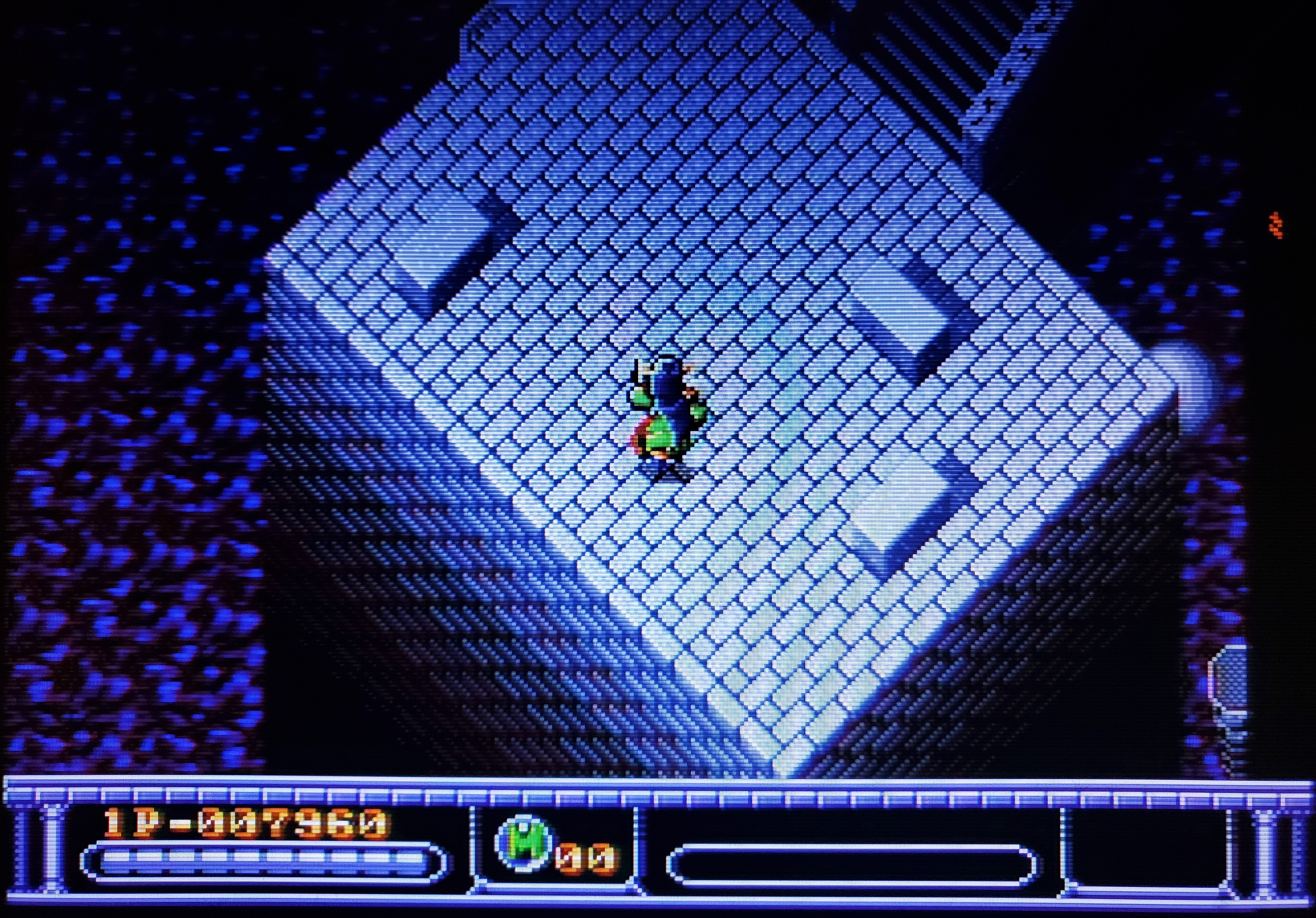






I’ve long had a fondness for the sort of pick-up-and-play fantasy action first popularized by Atari’s 1985 arcade smash Gauntlet. There’s just something exhilarating about choosing a hero from a stable of familiar sword & sorcery archetypes, then blasting though hoards of monsters and grabbing as much treasure as possible, all with a friend (or three!) at your side. The two Dungeon Explorer titles on the TurboGrafx-16 did this formula proud, so I thought I’d move over to the Genesis and see what the Sega camp had to work with around the same time.
Arcus Odyssey comes to us from Wolf Team, one of the now defunct Telenet Japan’s three internal game development divisions. Telenet’s output in general was known for being mostly decent, if a bit rough around the edges. That definitely holds true for Arcus Odyssey, which is rather ugly by 1991 Genesis standards. Apart from a slick cinematic opening depicting the evil sorceress Castomira being defeated and sealed away by her good rival, the visuals here are almost uniformly drab.
Fortunately, looks aren’t everything. Peer past those muddy graphics and the one or two-player quest to save the land of Arcus from a revived Castomira is pretty entertaining. It begins, of course, by having you select one of the four playable characters on offer. They vary in terms of attack range, weapon damage, starting health, and the like. Each also has his or her own selection of magic spells. I went with Diane the elf archer, and she turned out to be a great beginner’s pick. Her arrows don’t start out particularly strong, but her ready access to healing magic gives her unparalleled staying power.
The eight stages of Arcus Odyssey play out from an isometric overhead perspective. You’re able to move and fire in eight directions, and thus a good deal of the strategy involves determining ideal angles of attack against specific foes. In addition to firing your main weapon and using the occasional spell or item, you have the ability to summon a shield that can block most enemy projectiles. The catch being that you can’t move or shoot while defending this way.
None of the areas you’ll visit are especially complex, with the odd exception of the third, which is inexplicably larger and more difficult than any of the rest. Instead of only requiring you to perform simple tasks to open the way to the main boss, such as talking to an NPC or defeating one or more mid-bosses, level three is a maze-like pyramid containing five locked doors and their accompanying keys. I actually thought Arcus Odyssey would turn out to be quite the challenging playthrough when I reached this point, only to see things calm back down immediately after and stay that way right through to the very end. Strange.
One thing to be aware of up front is that despite being commonly described as an action-adventure or even an action RPG, Arcus Odyssey is a pure linear hack-and-slash affair at heart. Your sole means of boosting your character’s stats are the gems dropped by certain defeated bosses. These will grant a permanent increase to either maximum health or weapon power, depending on whether the gem is shining blue or red when you collect it. This mechanic appears to have been swiped directly from Dungeon Explorer, although I can’t say I really mind. It works!
Finally, I have to highligh the quality soundtrack here. It represents early work by the incredibly prolific and revered Motoi Sakuraba, so you know it’s worth a listen. In conjunction with the overall solid gameplay and co-op functionality, it makes Arcus Odyssey an easy recommendation for fans of this style of game. The abrupt difficulty spike in the third stage is an odd hiccup to be sure, but the unlimited continues and password system mean that it can absolutely be overcome with a little persistence. A Super Famicom port, Arcus Spirits, was released in 1993. However, that version is effectively the same adventure set to downgraded music. In other words, stick with the original. Your ears will thank you.
